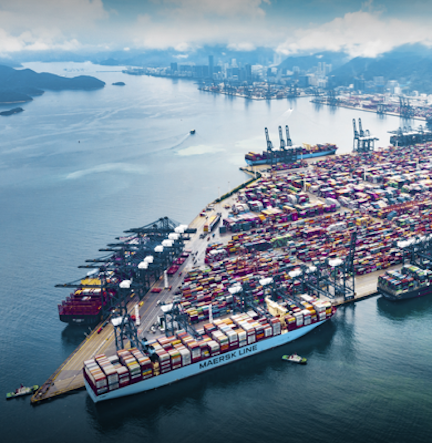The disruption of ocean containers stuck at the Port of Yantian in South China due to a COVID-19 outbreak “will cause ripples of potential congestion at the destination with a lag time of some 2-5 weeks,” according to Lars Jensen, CEO of Danish consultancy Vespucci Maritime.
Higher shipping rates may be the result. On June 7th, Bloomberg reported that the weekly China Containerized Freight Index for exports jumped to record rates:
The 40-foot container rate going to Los Angeles from Shanghai climbed by 3.7% to $5,952, according to the Drewry World Container Index.
Jensen said the Yantian shutdown “has now been ongoing for 14 days, which means the port has been unable to handle some 357,000 TEU.”

Jensen warned there is the additional problem of delays returning empty containers to China: “In all of this there is the issue of the disruption of empty flows back into South China to contemplate as an additional ripple effect.”
There were around 40 ships waiting at anchor for a berth to open up at Yantian on June 8th, according to news reports.
The Yantian port congestion problem is becoming the latest major disruptor and supply bottleneck for the container shipping carriers and is causing some companies to divert their ships from the South China port.
Jensen issued the warning about Yantian on June 8th in a LinkedIn post in which he also stated:
“Every day increases the pile of backlogged cargo. Once the ports re-open to normal operations we should expect a surge of cargo – at least to the degree there are even vessels available to handle this. This in turn will cause ripples of potential congestion at the destination with a lag time of some 2-5 weeks… Shippers should not underestimate the magnitude of the coming ripple effects.”
While major shipping lines have rerouted some ships to alternate South China ports such as Nansha, Shekou and Hong Kong, these facilities are not able to handle all the extra container flow.
Jensen explains why: “The other ports in Shenzhen region operates the same volume as Yantian – hence if they hypothetically should take over for Yantian that would require they increase their operations by 70%. The COVID restrictions in the wider Guangdong region point towards Nansha and Shekou being negatively affected and hence they certainly cannot take the massive overflow from Yantian.”
Jensen said the Yantian situation is now worse than the recent Suez Canal blockage: “Putting this in context, when Suez was blocked by the Ever Given this impacted a daily flow of 55,000 TEU. But Suez “only” lasted 6 days, in Yantian we are at 14 days and counting plus the impact on Nansha and Shekou.”
Jensen provided Yantian throughput losses to warn shippers: “Yantian handled 13.3 million TEU in 2020 – that equals 36,400 TEU per day. It appears that the west port is not operating and the east port where the deep-sea vessel tend to berth is operating at 30%. If we apply the 30% operating efficiency to the entire port this means we are potentially seeing the inability to handle 70% equal to 25,500 TEU per day.”

